It is a work of exquisite craftsmanship and an important symbol of the Ethiopian Orthodox Church: a gold crown, alloyed with silver and copper with filigree work and glass beads. Constructed of an inner raised and domed cylinder, with green fabric between the embossed tiers, the crown is completed with images of the Apostles. Once believed to be the royal crown of the Ethiopian Emperor Tewodros II himself, recent scholarship now suggests that it was probably commissioned in the 1740s by the Empress Mentewwab and her son King Iyyasu II. It is believed to have been given as a gift to a church in Gondar, along with a solid gold chalice.
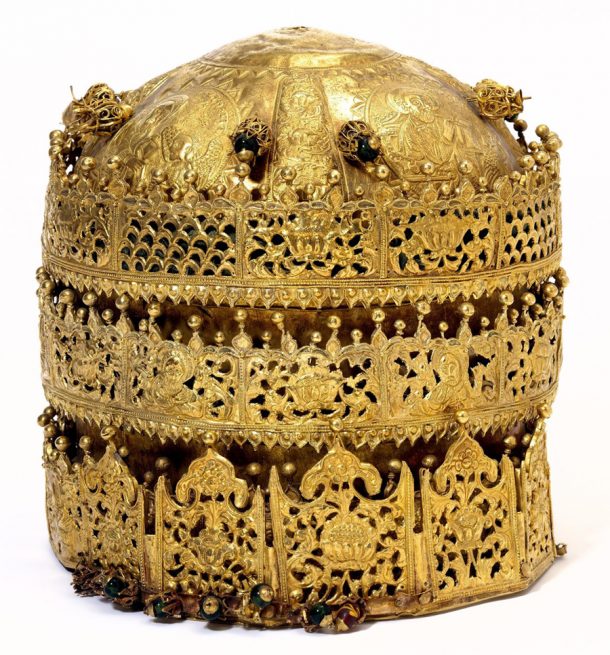
These objects have been on display at the V&A for the past 146 years. They are stunning pieces with a complex history. Taken by the British Army during the 1868 Abyssinian Expedition, a number of objects from Maqdala are now held across several British cultural collections. The crown and chalice have been on permanent display at the V&A since their arrival in 1872, most recently in the Sacred Silver galleries which highlight the role of precious vessels of gold and silver in religious rites and ceremonies.
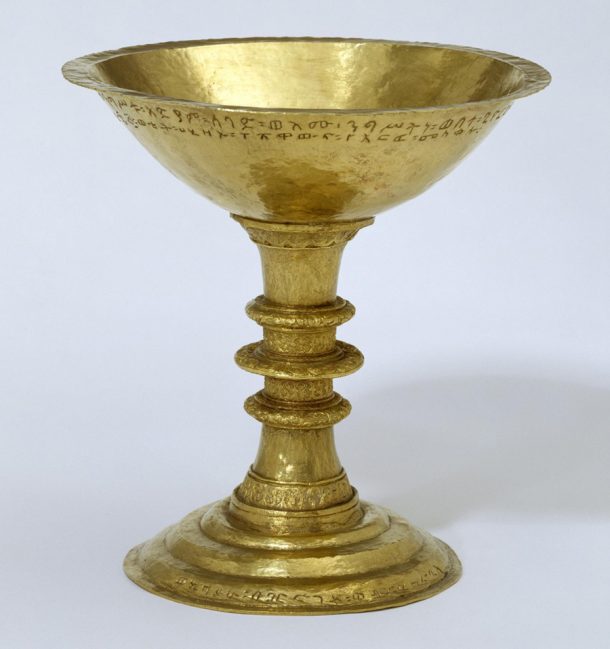
Museums have a global responsibility to better understand their collections, to more fully uncover the histories and the stories behind their objects, and to reveal the people and societies that shaped their journeys. To this end, we want to better reflect on the history of these artefacts in our collection – tracing their origins and then confronting the difficult and complex issues which arise.
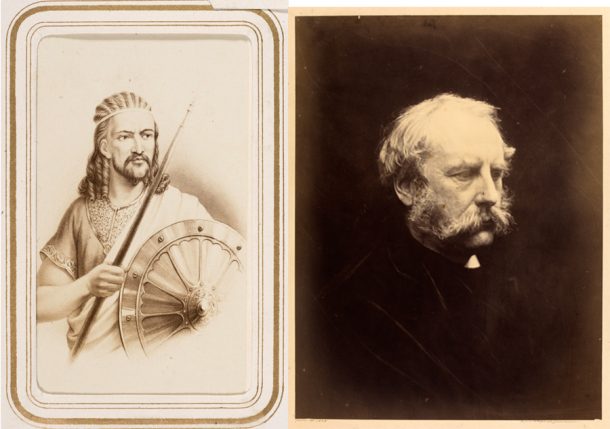
This vital process has started with Maqdala 1868, a free display in the V&A’s silver galleries opening on 5th April. It tells the story of the British Expedition to Abyssinia through around twenty objects relating to this significant moment in British and Ethiopian history. Even at the time, this episode was regarded as a shameful one. To secure the release of several British hostages imprisoned by the Ethiopian Emperor Tewodros II, Lieutenant General Sir Robert Napier gathered together an expeditionary force of 13,000 British and Indian troops, 26,000 camp followers, and 40,000 animals.
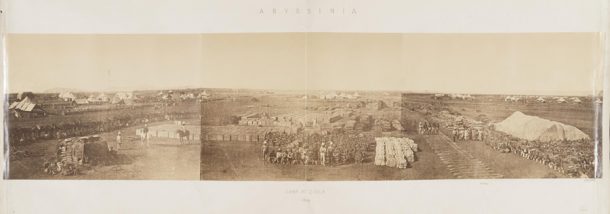
In April 1868, the forces reached Maqdala, stormed the fortress, secured the release of the hostages, recorded the Emperor’s suicide (with a sketch) and took with them any items of value which could be auctioned off to raise money for the military. Under the stewardship of Richard Holmes, a manuscripts curator at the British Museum, the crown, chalice, and many other Ethiopian objects made their way back to England where they were deposited with various national museums.
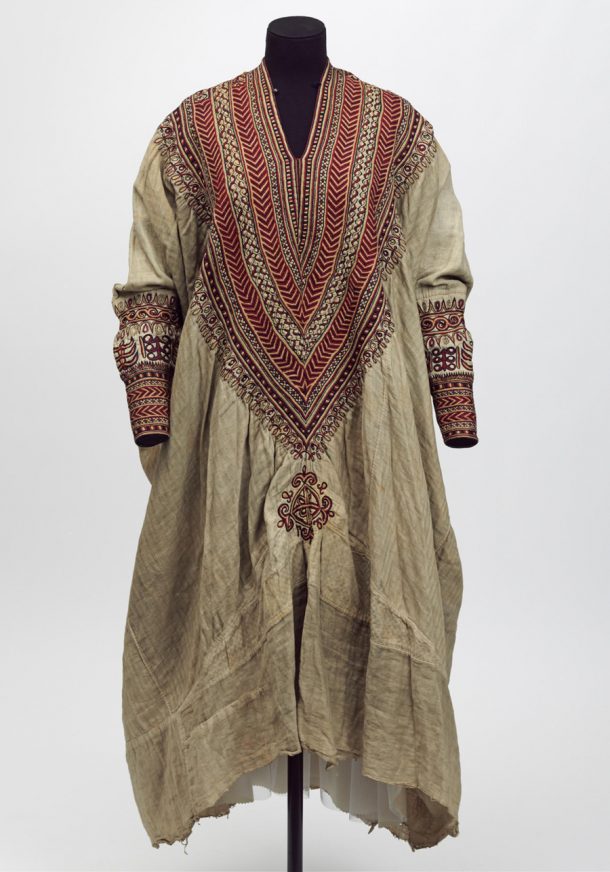
As well as the military history behind the acquisition of these objects, the objects on display in Maqdala 1868 also reveal deeply personal stories. The display includes a dress and jewellery belonging to Tewodros’ widow, Queen Terunesh, who died only a month after her husband. Terunesh had asked that the British troops escort her to her native province of Semyen in order to protect her from Tewodros’s rivals, but she died from lung disease during the journey. After her death, her dress and jewellery were sent to the Secretary of State for India at the India Office in London. They were then given to the South Kensington Museum, now the V&A, in 1869.
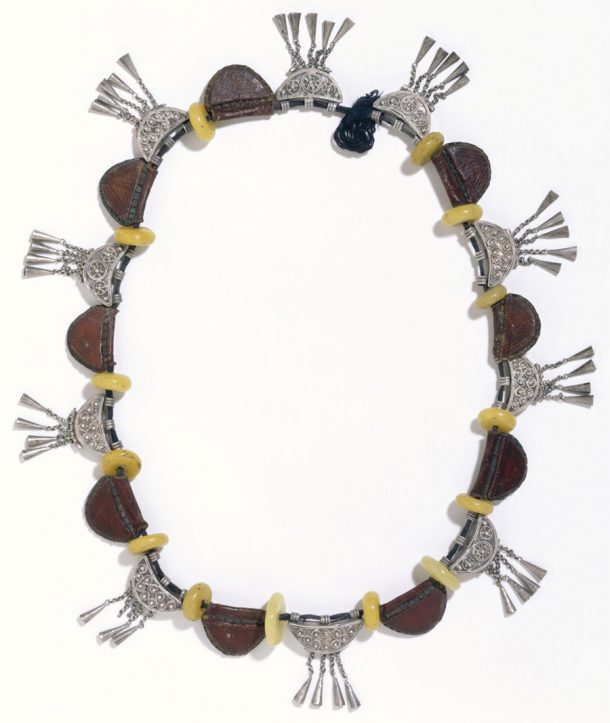
Perhaps the most moving part of the Maqdala story is the fate of Tewodros’s son, Prince Alemayehu. Terunesh’s death left the prince an orphan at just seven years old. He was placed under the guardianship of a British army officer, Captain Tristram Charles Sawyer Speedy. Alemayehu was brought to England, where the government assumed responsibility for his care and education. Maqdala 1868 includes a photograph of Speedy and Alemayehu taken by the famous photographer Julia Margaret Cameron, on a visit to Queen Victoria’s Isle of Wight residence, Osborne House. Queen Victoria was particularly fond of Alemayehu, and was deeply saddened to learn that he had died in 1879 at the age of just nineteen. The inclusion of this photograph in the display juxtaposes Alemayehu with some of the other great treasures taken from Ethiopia, reminding us that not only material possessions were lost to the British forces.
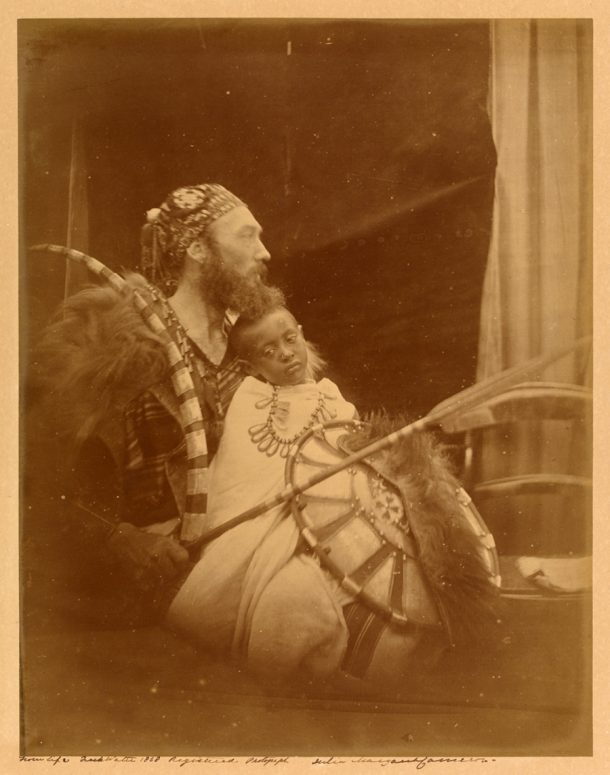
As Prime Minister, William Gladstone condemned the taking of treasures from Maqdala, particularly the gold crown and chalice, and ‘deeply lamented, for the sake of the country, and for the sake of all concerned, that these articles … were thought fit to be brought away by a British army.’ He urged that they ‘be held only until they could be restored.’ In the display, visitors will be able to read these excerpts from Gladstone’s speech next to the Ethiopian treasures themselves, along with a number of other quotes from contemporary sources. These quotes are presented alongside present-day insights from members of the Ethiopian and Rastafari communities in London, which underscore the continuing significance of these objects to communities in Britain and beyond.
As custodians of these Ethiopian treasures, we have a responsibility to celebrate the beauty of their craftsmanship, shine a light on their cultural and religious significance and reflect on their living meaning, while being open about how they came to Britain. Maqdala 1868 marks the beginning of what we hope will be an ongoing dialogue about the history of these objects and their place in our national collection today.
The display has been organised in consultation with the Ethiopian community here in London, and is the result of strong collaboration, generous support and valued advice. I’d specifically like to thank His Excellency Dr Hailemichael Aberra Afework and the Ethiopian Embassy in London; members of the Ethiopian Heritage Fund and the Anglo-Ethiopian Society; members of the Orthodox Tewahedo Church; and members of the display’s advisory group.
I think this close collaboration really underscores the continuing significance of these objects to communities in Britain and beyond, whilst enabling a vital new understanding of the collection’s significance. With this important free display, we are pleased to share these objects with a new V&A audience, to encourage a better – and a wider – understanding about these objects’ difficult past and their rich Ethiopian cultural heritage.
Tristram Hunt, Director of the V&A
Maqdala 1868 will run from 5 April 2018 to July 2019, in the Silver Galleries, Room 66. Admission is free.
2018 also marks the 200th anniversary of the birth of Emperor Tewodros.



According to the BBC these items are going home to Ethiopia on “long term loan” – please may it be so.
And also please highlight our government’s inexplicable refusal to allow the return of Prince Alemayehu’s body to his homeland.
You nick my gear then offer to loan it back to me?
“Even at the time, this episode was regarded as a shameful one.”
so give it back
Thou shalt not steal
Do the right thing . End this greedy acquisition. Give back the Crown and chalice help restore human faith between two great people’s.
Return the property where it belongs, this should be in ethiopia where we can teach our next generation about our history but what do we teach them that its ok to steal from 3rd world countries, its shanefull return it to the right owners
Must get back to the original place to the owners period.
Britain has a duty to return all stolen African treasures. They plundered Africa of many of its treasures and continues to do so even today. Loaning to Ethiopia their own valuables is an insult to all Africans.
Colonials masters are not ashamed of their deeds even in this civilized environment. never trust them whether dead or alive. i hear loaning. you just have to give back what you guys plundered otherwise its shameful and even generations to come in Africa will live to curse you guys.
It was fortunate that Britain preserved this magnificent collection. Would it have survived otherwise?
Please tell us where all the other looted items are. Why not display more? How much of it are you returning back to Ethiopia?
Ann O’Brien
1) The British looted thousands of items, where is it now? Still looking after it I guess??
2) Ethiopians have kept items that were stolen for centuries, so Ethiopia was doing fine before it was stolen, thank you!!
3) What makes you think the British can do a better job?
4) Even IF, IF Ethiopians did not look after their items- its ‘theirs’ who made The British custodians??
Thiese items looted from Ethiopia and should be returned back.
Does anyone know what has happened to the “Crown of Tewodoros II” which was repatriated to Ethiopia in 1925? Is it on display? It doesn’t appear to be visible on the internet. This crown was another item looted from Maqdala but was taken by the German “interpreter” Gerhard Rohlfs and subsequently presented by Wilhelm I to Queen Victoria. See https://www.linkethiopia.org/article/1-the-crown-of-emperor-tewodros-ii/ and https://www.linkethiopia.org/article/the-crowns-of-emperor-tewodros-loot-from-maqdala/
The publicity made this sound wonderful – but what a disappointment. Why are metalwork objects shown plunged in darkness. The textiles, photographs and books should have been in a separate, low light, display case. The metalwork should have been lighted strongly enough to enable the visitors to see the engravings on the Coptic crosses – invisible in the gloom of the display. Furthermore, why are tiny manuscripts not placed in the front of the display case where they can be seen, as opposed to about a metre away from the glass.
Fortunately I had my camera and am now going to look at the objects with the zoom feature and perhaps I’ll be able to see the details that were not visible to the naked eye due to the darkness in the display case.
I’m Ethiopian and went to see it . I think it’s the best place to be kept. We Ethiopians we don’t look after what we got ! Like lalibela and so on church’s . My opinion is to be kept in UK . At the end of the day it’s Ethiopian’s History remember that.
Not to return the stolen items means
It is shameful and It is strongly to
DREAM colonization.
The antiquities should be returned lock, stock and barrel and the most decent thing would be to support the Ethiopians in maintaining them properly- if it can be loaned it can be returned! What are we? Stupid? Or is it still a case of pirates in suits?
Thank you for keeping all the above items so beautiful!
However they should all be returned back to Ethiopia including
the other items which are not in display.
Because they were taken out from Ethiopia without permission.
As (temporary) custodians of these Ethiopian treasures, the V&A Trustees have a responsibility…………. as was requested by then Prime Minister, William Gladstone, that the loot be held only until such time it is restored.
Time to send it back now!
I agree with return. The British as civilized and cultured people should not allow this stain to fester.
https://ethiopianrecycler2.wordpress.com/2018/04/03/the-thief-makes-the-rules/
For the Victor belongs spoils of war!!i may be Ethiopian but im OK with the long term loan .i doubt ot wpuld have survived this long had it stayed in ethiopia .
I think the Ethopians should accept the offer of a long term loan, then forget to give them back. Posession is 9/10s of the law, it doesn’t matter how you get them back it just matters that you do. Would the V & A really go to court to try and get them back once they were in Ethopia? With all the negative publicity that would ensue? I doubt it.
The costs of sending an Army to free the British Consul and other ex-patriates that were taken prisoner or Hostage by the Emperor should be on the Emperor otherwise they would not have been sent.
The objects have been kept and maintained ever since, where would they be now if they were not in the British Museums ? melted down, used by various communist/freedom fighters etc.. etc.. Taken even, by the Italians after the Mussolini invasion ? we’ll never know. I agree that they should now be returned, but only if they can be secured properly in their own country otherwise they may be lost forever.
Although in principle in favour of returning much plundered material, it is worth considering that the existence of plundered material in museums is a good way to illustrate the history of both the plundered and the plunderer and the interconnectedness of seemingly unconnected places. A good example of this is the Aztec headdress in Vienna, there because of the Hapsburgs. It probably tells people more by being in Vienna than it would in Mexico. So a blanket repatriation of everything is probably not desireable.
The last 27 years, Ethiopia has been colonised by the Tigrean people liberation front. This front has applied a constitution to dismantle Ethiopia. These artefacts in Britain should remain where they are as long as the current colonising rulers are in power. When Ethiopia is liberated and Ethiopianism is restored, the artefacts can go back home.
my comment was going to be as most of the above…HOWEVER…. ONE COMMENT STOOD OUT ABOVE…. it was the one from an Ethiopian person who said that they should remain here in the UK because they are being taken care of here and the Ethiopians do not know how to take care of their own now so keep here to be sure they are safe. This makes me wonder are there facilities that will keep these as they have been kept thus far or better??? If not then we need to confirm what other Ethiopian people say about their items from the past. SHOULD WE KEEP THEM FOR SAFE KEEPING AS THIS NATIVE PERSON SUGGESTS???
I know people will taunt me for saying this but as a firm believer I feel that we MUST listen to an overall of the native peoples requests!!
Give Ethiopia their stuff back. “Taken during an expedition” more like “looted during a spree of colonial violence and genocide”
“colonial violence and genocide” you say Ashley? The British were in the country to free hostages – British citizens – taken prisoner by a feudal tyrant. These artefacts were victor’s spoils. The Abyssinian Expedition is a rare example of a British intervention in Africa that was entirely provoked by Africans.
forgot to add:
Part of the loot from Ethiopia is held by the Royal Ontario Museum in Toronto, such as the church curtain, candelsticks etc. These should be placed on display too and later returned to Ethiopia.
We should certainly return the Maqdala treasures. The Napier campaign against Theodore II was a shameful example of colonial bullying, resulting in the Emperor’s death, and in its outrgaeusness looked forward to the 902 Younghusband expedition against Tibet in 1902.
Good post. I find out something new and challenging on articles I stumbleupon day-to-day. It will always be exciting to study content material from all other editors and practice a little something from other online websites.